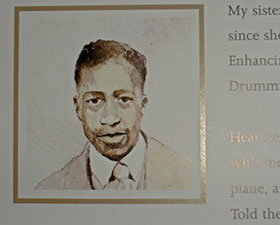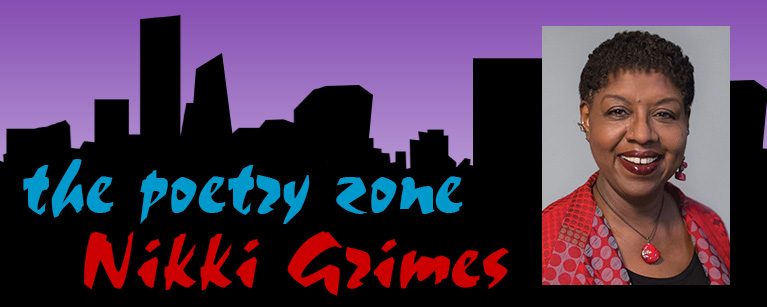Talkin’ About Bessie, my biography of aviator, Elizabeth Coleman, was an exercise in extreme patience and perseverance. If you’ve read Part I of this blog post, you already know how taxing this project was from the start! The entire saga was a bit too long for one blog post, though, so I decided to break it up. Here, then, is Part II.
 Signing on E.B. Lewis as the illustrator for Talkin’ About Bessie should have been the end of the long saga of bringing this book to market. It wasn’t.
Signing on E.B. Lewis as the illustrator for Talkin’ About Bessie should have been the end of the long saga of bringing this book to market. It wasn’t.
As mentioned in Part I, after Bessie’s original editor moved on to another publishing house, a round-robin of editors temporarily filled the spot over the course of a few years. With all that coming and going, some important details of book production fell through the cracks. For example, no one was sharing early sketches with me. That was proven to be a huge mistake. When I saw the F&Gs, I realized that one character, who was supposed to be African-American, had instead been portrayed as a white person. More egregious than that, however, was the fact that a female character had been portrayed as a man. This was a biography, after all, and that character represented an actual, not a fictional, person. A change in gender goes far beyond the bounds of poetic license! To say I was aghast when I realized this error is to understate the fact.
Both paintings had to be redone. The good news, I suppose, is that I caught the errors in time!
Whew! That was close. Yes. But that’s not the end of the story.

As I flipped through the F&Gs a few more times, looking for additional mistakes or omissions, I realized the bibliography was nowhere to be found. But surely I was wrong, I thought. Perhaps it had simply fallen out of this particular copy of the F&G. So, I checked a second copy. Nope. No bibliography there, either. Frantic, I called the editor.
“Where is the bibliography?” I asked.
“Bibliography?” she repeated, as if I were speaking another language. “Was there a bibliography?”
I ground my teeth and did a slow burn.
“Yes. I. Gave. You. A. Bibliography.”
“Oh!” she said. “Wait a minute. I think I do remember seeing one. Let me go back and find it.”
“You do that,” I said.
I won’t tell you what I was thinking in that moment. I try not to use that kind of language.
Eventually, the bibliography was found. However, since space allocation had already been set, the challenge of the art director was to find some space in which to include it. In the end, the bibliography was reduced to the smallest possible font, and the whole was shoe-horned into the book.
While all this was going on, I begged the publisher not to release the F&Gs to reviewers until the bibliography could be added. I was told not to worry. You know where this is going.
The first reviews were released, and critics noted that no bibliography was available. The publisher tried to keep my head from exploding by assuring me that an errata sheet would go out to reviewers to let them know a bibliography was, in fact, in existence. I could not be mollified.
By the time the finished book hit store shelves, I remember thinking, “This damn book better win something, after all this!”
Total time invested? Six years. Payoff? Coretta Scott King Honor for text, Coretta Scott King Award for illustration, and many, many fans. I hope you’ll become one, if you haven’t already.
I’ll close with a favorite poem from the book, “School Teacher.”
When it came to knowledge, Bessie was a miser,
hoarding facts and figures like gold coins she was
saving up to spend on something special.
I’d watch her sometimes,
poring over her lessons,
lips pursed in concentration.
Often, when the subject turned to math,
she’d glance up at me and, I’d swear,
she’d get a sort of greedy look in her eyes.
But maybe it was just my imagination.
I did not imagine her persistence, though.
Come rain or shine, if work allowed,
Bessie would attend the hot-in-summer,
cold-in-winter, one-room Colored schoolhouse
where I taught in Waxahachie.
Not even the four-mile walk it took to get there
discouraged her from making her way to class.
Still, bright as she was, I worried that her fine mind
would soon be sacrificed to a life spent picking cotton
or working in the mills, like so many others had before.
But, after each harvest, she’d return to class,
determined as ever to snatch up and pocket
every tidbit of knowledge I could offer.
“Teacher,” she’d say, “one day, I’m going
to amount to something.”
Bless God! I need not have
fretted in the least.



One Response
I just discovered “Talkin’ About Bessie,” read it in one sitting, and am absolutely delighted by its story and poetry. Thank you so much for writing this wonderful account of Bessie Coleman’s amazing life, and kudos to you for the genius of framing the narrative within the context of a fictional memorial service. Storytelling at its best, indeed! I’m purchasing a copy of “Talkin’ About Bessie” today, and I’ll use it as a benchmark for writing biographies of my own. By the way, I read “Words with Wings” last year and loved every single word. Thank you for sharing your esteemed talents with the world.